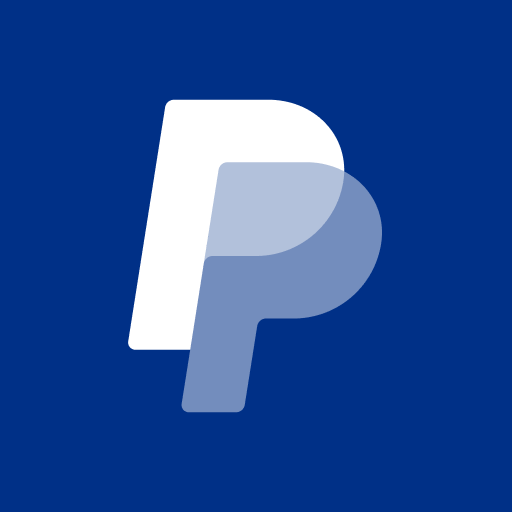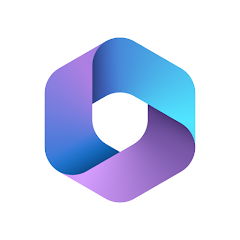Streamlining Tasks with Trello A Project Management Powerhouse
1st November 2024
Diane Marley
Looking to enhance task efficiency and elevate project management proficiency? The solution lies in utilizing Trello.
This exploration will delve into the fundamental features of Trello, elucidate the process of establishing a Trello board, demonstrate the application of Trello in project management, outline the advantages of Trello utilization, and conduct a comparative analysis with alternative project management tools such as Asana, Basecamp, and JIRA.
Embark on a journey into the realm of Trello to unlock its capabilities as a formidable project management tool.
What is Trello?
Trello is a cloud-based project management tool that employs a user-friendly Kanban-style board system to assist teams in optimizing their workflow, fostering collaboration, and effectively overseeing tasks, thus serving as a robust solution for individual and team productivity enhancement.
When utilizing Trello, both individuals and teams have the capability to generate boards for projects, allocate tasks to team members, establish deadlines, attach files, and engage in communication through comments, all within a visual and intuitive interface. The Kanban methodology, renowned for its simplicity and adaptability, give the power tos users to visualize their workflow stages, shift tasks between columns such as 'To Do,' 'In Progress,' and 'Done,' and seamlessly monitor progress.
This real-time visibility ensures alignment across team members, fosters transparency, and bolsters productivity by mitigating bottlenecks and refining task prioritization.
What Are the Key Features of Trello?
Trello provides a range of fundamental features, such as customizable boards, lists, and cards, which are integral components for effectively organizing and overseeing tasks.
Within Trello, boards function as the primary structure for users to classify their projects into distinct segments or workflows. Lists play a crucial role in breaking down these projects into smaller, more manageable tasks or stages, facilitating a structured progression of work. In contrast, cards can be likened to interactive sticky notes that contain detailed information about each task. Users have the capability to assign due dates to cards to establish timelines and deadlines, ensuring timely task completion. Furthermore, labels offer an additional level of organization by categorizing tasks according to priority, type, or other customizable criteria.
How to Set Up a Trello Board?
The process of establishing a Trello board entails:
- Initiating a new board
- Tailoring it to align with the requirements of the project
- Incorporating lists and cards to facilitate the organization of tasks
1. Creating a Board
To create a board in Trello, the user should commence by selecting the 'Create new board' option from their dashboard. Subsequently, they should customize the board's background and title to align with the requirements of their project.
After selecting a background and assigning a suitable title to the board, the user can proceed to further tailor it by incorporating lists and cards that represent distinct tasks or categories within the project. This initial configuration not only enables users to personalize the visual aspects of the board but also facilitates visual organization, enhancing the ability to monitor progress and effectively manage tasks. Additionally, appropriately naming the board can serve as a convenient reference point for both the user and their team members, enabling swift access to and retrieval of pertinent information within the board.
2. Adding Lists and Cards
Incorporating lists and cards into a Trello board facilitates the segmentation of tasks into manageable units, thereby enhancing the ability to monitor progress and efficiently oversee workflows.
By segregating tasks into lists based on priority or stages of completion, a clearly defined project structure can be established. Each card corresponds to a specific task within these lists, give the power toing individuals to allocate due dates, provide descriptions, attach files, and engage in collaborative efforts with team members. This granular breakdown of tasks not only aids in task organization but also serves to prevent oversights.
Monitoring the advancement of each card offers a visual depiction of the project's progression, enabling proactive adjustments and timely adherence to deadlines.
3. Assigning Labels and Due Dates
The assignment of labels and due dates to cards within the Trello platform is instrumental in the prioritization of tasks and the facilitation of timely completion, both of which are pivotal elements in effective task management.
Within Trello, labels serve as a visual mechanism for categorizing tasks based on their type, importance, or current status. Through the allocation of labels such as 'urgent', 'in progress', or 'completed', users are able to swiftly discern the status of each task displayed on their board. This feature offers a comprehensive overview of tasks that demand immediate attention as well as those that can be addressed at a later stage.
Furthermore, the establishment of due dates for cards results in the cultivation of a sense of urgency and accountability, thus ensuring the timely accomplishment of tasks. The synergistic effect of utilizing both labels and due dates streamlines the process of task prioritization, ultimately contributing to the efficiency of task management.
4. Inviting Team Members
Including team members on your Trello board promotes collaboration and guarantees alignment, facilitating improved communication and teamwork.
When you add members to your Trello board, you enable the sharing of crucial project updates, task assignments, and real-time feedback. The platform's comment feature enables smooth discussions, fostering well-knowledge-based decision making. Notifications ensure team members are kept up-to-date on any modifications or impending deadlines, thereby boosting accountability and productivity. This degree of transparency and efficient communication give the power tos teams to work effectively towards shared objectives, ensuring that projects progress smoothly and goals are achieved efficiently.
How to Use Trello for Project Management?
Employing Trello for project management entails crafting a comprehensive project plan, delegating tasks and deadlines to team members, and monitoring progress utilizing its user-friendly workflow management functionalities, rendering it well-suited for Agile methodologies.
1. Creating a Project Plan
Developing a project plan within Trello entails delineating the project's scope, segmenting tasks into lists and cards, and visualizing the workflow to ensure lucidity and alignment. Through defining the project's scope, one can articulate the goals and objectives that necessitate accomplishment. The subdivision of tasks into lists and cards aids in the organization and structuring of work, facilitating the assignment of responsibilities and monitoring of progress. Visualizing the workflow offers a comprehensive overview of how tasks progress from one stage to the next, elucidating dependencies and potential bottlenecks. Trello's visual interface enhances this process by enabling users to manipulate cards, generate checklists, establish deadlines, and seamlessly collaborate with team members.
2. Assigning Tasks and Deadlines
The assignment of tasks and deadlines through Trello is essential to ensuring clarity and accountability among team members, thereby facilitating effective collaboration and task management.
This practice plays a crucial role in fostering accountability within the team by removing any ambiguity regarding individual responsibilities. Clear task assignments and deadlines increase the likelihood of timely delivery as expectations are clearly defined. Deadlines create a sense of urgency and motivation within the team, prompting efficient task prioritization. Well-defined tasks and deadlines facilitate progress tracking, bottleneck identification, and necessary adjustments to ensure the timely completion of projects.
3. Tracking Progress and Collaboration
Progress tracking and fostering collaboration in Trello are made seamless through functionalities such as progress tracking, automated workflows, and real-time updates, ensuring the project maintains its course.
Checklists serve as a valuable asset in Trello, enabling users to disintegrate tasks into smaller, manageable steps and check them off upon completion, offering a transparent overview of the project's advancement. The comments feature allows team members to engage within tasks, exchanging ideas, feedback, and updates effortlessly. Real-time updates guarantee that all individuals are operating with the latest information available.
Moreover, workflow automation assumes a pivotal role in optimizing processes, diminishing manual tasks, and augmenting efficiency in project management.
What Are the Benefits of Using Trello for Project Management?
The utilization of Trello for project management presents various advantages, which encompass:
- an organized and visual workflow,
- heightened efficiency and productivity,
- enhanced communication and collaboration,
- and convenient accessibility and seamless integration with other tools.
1. Organized and Visual Workflow
Trello's structured and visual workflow facilitates teams in gaining clear visibility into their tasks and progress, thereby simplifying project management and prioritization. By presenting tasks in a visually engaging manner, team members can promptly comprehend the status of each task and its role within the overarching project. The utilization of color-coded labels, due dates, and checklists provides a comprehensive overview that enhances communication and decision-making processes. This visual representation diminishes the likelihood of misinterpretations or missed deadlines, ensuring alignment among team members towards shared objectives. The ability to effortlessly drag-and-drop tasks, reorder lists, and assign responsibilities fosters seamless collaboration and heightened productivity levels.
2. Increased Efficiency and Productivity
The utilization of Trello can significantly enhance efficiency and productivity within an organization by facilitating the optimization of task management and automation of workflows. These functionalities enable teams to dedicate their efforts towards high-priority assignments.
Within Trello, the task management feature give the power tos users to generate comprehensive task cards, delegate responsibilities to team members, establish deadlines, and monitor progress effortlessly. By centralizing communication and documentation through the platform, users can enhance collaboration and uphold project timelines effectively.
Moreover, Trello's automation capabilities for workflows simplify recurring tasks and streamline operational processes, thereby conserving valuable time and resources. The incorporation of prioritization tools like labels, due dates, and checklists assists teams in systematically organizing and ranking their workload, ensuring the timely and accurate completion of essential assignments.
3. Improved Communication and Collaboration
Trello elevates communication and collaboration within teams by incorporating functions such as comments, attachments, and real-time notifications to ensure comprehensive information dissemination and active engagement among all members.
Comments within Trello serve as a platform for team members to provide feedback, seek clarification, or make suggestions pertaining to specific tasks or projects. The notification system facilitates prompt alerts for users in response to any modifications or mentions in comments, enabling swift and continuous communication. Furthermore, file attachments allow for the seamless sharing of pertinent documents, images, or other resources directly within task cards, thereby optimizing access to critical information and promoting a cohesive collaborative environment among team members.
4. Easy Accessibility and Integration
Trello provides convenient accessibility and seamless integration with a variety of tools, including a mobile application, enabling teams to effectively oversee projects from any location and synchronize with other project management systems. The mobile app represents a pivotal feature that give the power tos users to maintain connectivity and receive project updates even while on the move, facilitating seamless collaboration among team members and enabling real-time modifications to project tasks.
Furthermore, Trello's capability to work together with a range of tools such as Google Drive, Slack, and Jira significantly augments its functionality by offering a centralized platform for project management. This integration not only enhances communication and workflow processes but also boosts efficiency and productivity levels within the team.
How Does Trello Compare to Other Project Management Tools?
In the assessment of Trello in relation to other project management tools such as Asana, Basecamp, and JIRA, it distinguishes itself through its user-friendly interface, visual Kanban boards, and the flexibility it offers in the management of tasks and workflows.
1. Trello vs Asana
Trello and Asana both serve as robust task management tools, each offering distinct advantages tailored to different organizational needs. Trello's utilization of visual Kanban boards enhances its user-friendliness, particularly appealing to teams that thrive on visual workflows.
In contrast, Asana adopts a more structured organizational approach through its task lists and timeline views, positioning it as an ideal choice for teams necessitating a meticulous and methodical task management framework. While Trello excels in presenting tasks and workflows visually, Asana showcases its strength in managing intricate projects entailing multiple dependencies and subtasks.
Both platforms incorporate collaboration features, yet Trello's simplicity tends to attract creative teams seeking a streamlined approach, whereas Asana's adaptability caters well to project managers and larger teams encompassing complex task structures.
2. Trello vs Basecamp
Basecamp is recognized for its comprehensive project coordination capabilities, while Trello stands out for its adaptable and visually-oriented approach to task and workflow management.
Trello's user-friendly interface enables the creation of boards, lists, and cards, facilitating a highly customizable workflow that fosters collaboration and boosts productivity. Conversely, Basecamp's project coordination features prioritize simplifying communication and consolidating project data, catering to teams seeking an efficient approach.
Individual preferences vary, with some users favoring Trello's straightforwardness and others valuing Basecamp's integrated platform that consolidates tasks, schedules, and file sharing in a singular location.
3. Trello vs JIRA
Both Trello and JIRA are platforms that support Agile methodologies, each offering distinct advantages based on specific team requirements. Trello's intuitive interface and simplicity make it a preferred choice for teams in search of a straightforward task management solution. Conversely, JIRA provides more advanced features tailored to the complexities of intricate projects.
Trello allows teams to effortlessly create boards, lists, and cards for visualizing and prioritizing tasks, making it particularly well-suited for smaller projects or teams transitioning to Agile methodologies. In contrast, JIRA boasts robust functionalities such as customizable workflows, issue tracking, and extensive reporting capabilities, catering to the demands of larger and more complex projects necessitating meticulous planning and execution.
Despite their divergent attributes, both Trello and JIRA play pivotal roles in fostering collaboration, transparency, and efficiency throughout Agile project management processes.















